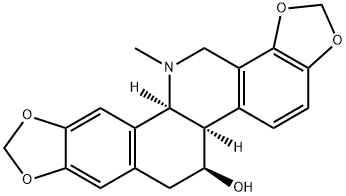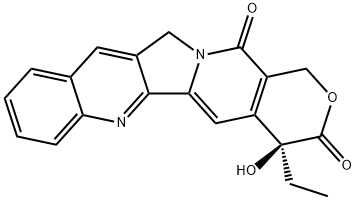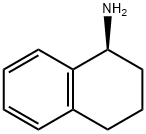PRODUCT Properties
| Melting point: | 135-140°C |
| alpha | D22 +115 ±3° (ethanol); D20 +117° (c = 3 in CHCl3) |
| Boiling point: | bp0.002 220° (air-bath temp) |
| Density | 1.2976 (rough estimate) |
| refractive index | 1.5800 (estimate) |
| storage temp. | Sealed in dry,2-8°C |
| solubility | Soluble in chloroform; slightly soluble in methan |
| form | powder |
| pka | 14.11±0.20(Predicted) |
| color | Colorless |
| Merck | 13,2061 |
| InChIKey | GHKISGDRQRSCII-ZOCIIQOWSA-N |
| LogP | 2.899 (est) |
| CAS DataBase Reference | 476-32-4(CAS DataBase Reference) |
Description and Uses
Chelidonine, also named ranunculine, is a kind of alkaloid isolated from the whole
plant of Chelidonium majus. L . As a kind of traditional Chinese medicine,
Chelidonium majus. L was firstly recorded in Chiu Huang Pen Ts’ao of Ming
dynasty. In the seventeenth century, it has been used for the treatment of jaundice,
biliary colic, and cholelithiasis. In 1941, a researcher from Soviet Union reported
that it showed good effect for the treatment of cutaneous tuberculosis. This plant has
multiple effects on different diseases, including anti-inflammatory, analgesia,
relieving cough, inducing diuresis, anticancer, antifungal, relieving asthma, and
detoxification. It was recorded in the Pharmacopoeia of the People’s Republic of
China (1977) .
The material basis for Chelidonium majus. L is alkaloid. Among which, chelidonine,
a benzophenanthridine alkaloid, is the main effective ingredient . Although
great progresses have been made in the chemical synthesis of chelidonine recently,
the biosynthetic pathways of chelidonine remain unclear, which still need in-depth
study and exploration in the future
Poison; central nervous system depres- sant causing sleepiness, depression, slowing of the pulse, coma and circulatory failure.
Safety
| Symbol(GHS) |  GHS06 |
| Signal word | Danger |
| Hazard statements | H301+H331 |
| Precautionary statements | P301+P310+P330-P304+P340+P311 |
| Hazard Codes | Xn |
| Risk Statements | 25-20/21/22 |
| Safety Statements | 20-45-36/37 |
| RIDADR | 2811 |
| WGK Germany | 3 |
| RTECS | FL9450000 |
| Toxicity | LD50 in mice (mg/kg): 34.6 ±2.44 i.v. (Anderson, Chen) |




